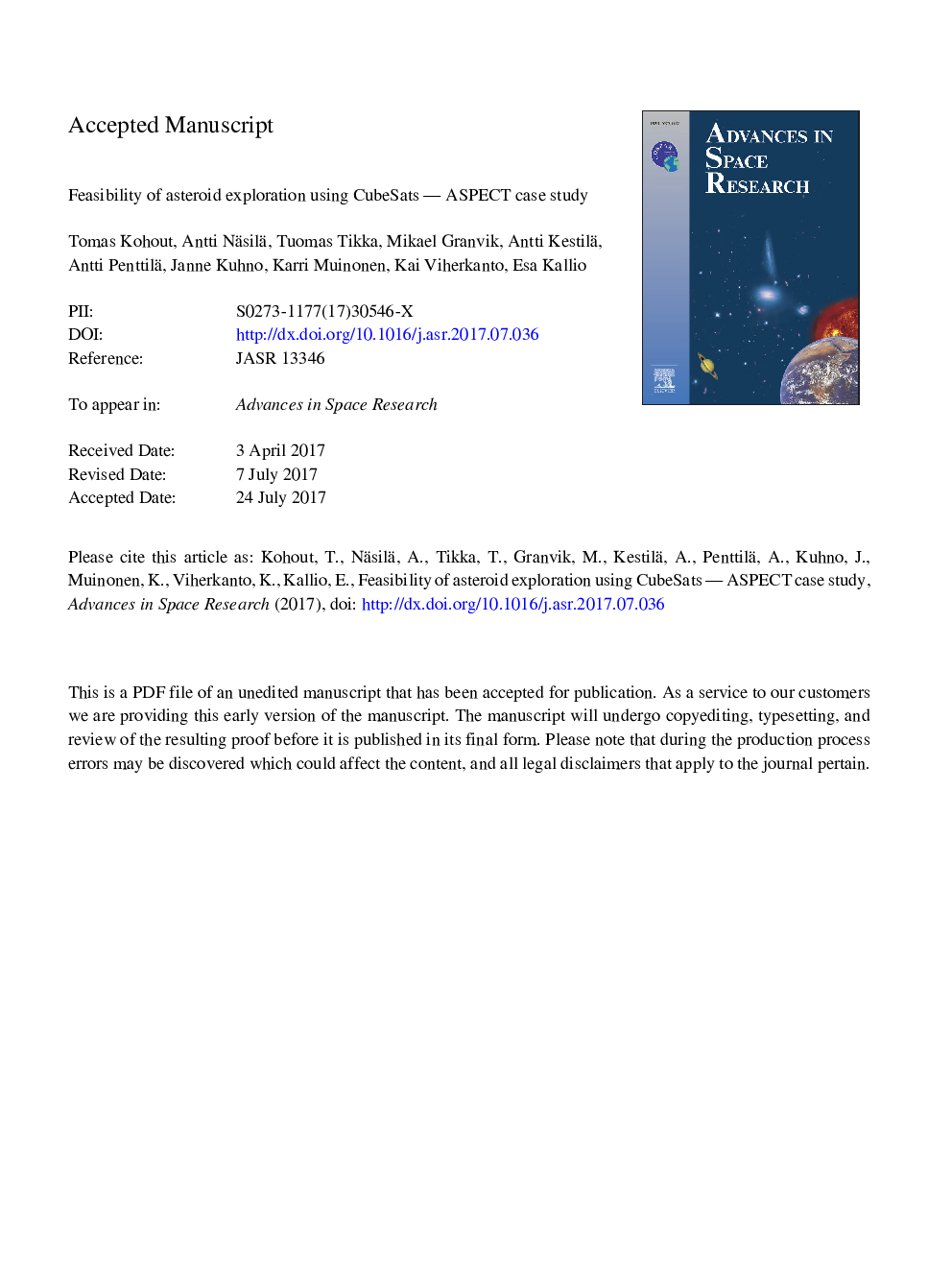| Article ID | Journal | Published Year | Pages | File Type |
|---|---|---|---|---|
| 10156409 | Advances in Space Research | 2018 | 13 Pages |
Abstract
Operation of a small CubeSat in the deep-space microgravity environment brings additional challenging factors including the increased radiation environment, the significant contribution of non-gravitational forces to the satellite orbit, or the limited communication opportunities. These factors need to be taken into account in the form of modifications to the classic CubeSat architecture. Increased radiation resistance, the semi-autonomous satellite operation, navigation, and the active orbit correction are required. Such a modified CubeSat platform can potentially deliver a high performance to mass and cost ratios. The Asteroid Spectral Imaging Mission (ASPECT) is a three unit (3U) CubeSat mission built on these principles. It is part of the AIDA (Asteroid Impact & Deflection Assessment) project to the binary asteroid Didymos. ASPECT is equipped with a visible to near-infrared hyperspectral imager and will deliver both technological knowledge as well as scientific data about the origin and evolution of Solar System small bodies.
Related Topics
Physical Sciences and Engineering
Earth and Planetary Sciences
Space and Planetary Science
Authors
Tomas Kohout, Antti Näsilä, Tuomas Tikka, Mikael Granvik, Antti Kestilä, Antti Penttilä, Janne Kuhno, Karri Muinonen, Kai Viherkanto, Esa Kallio,
